OUR COLLECTION
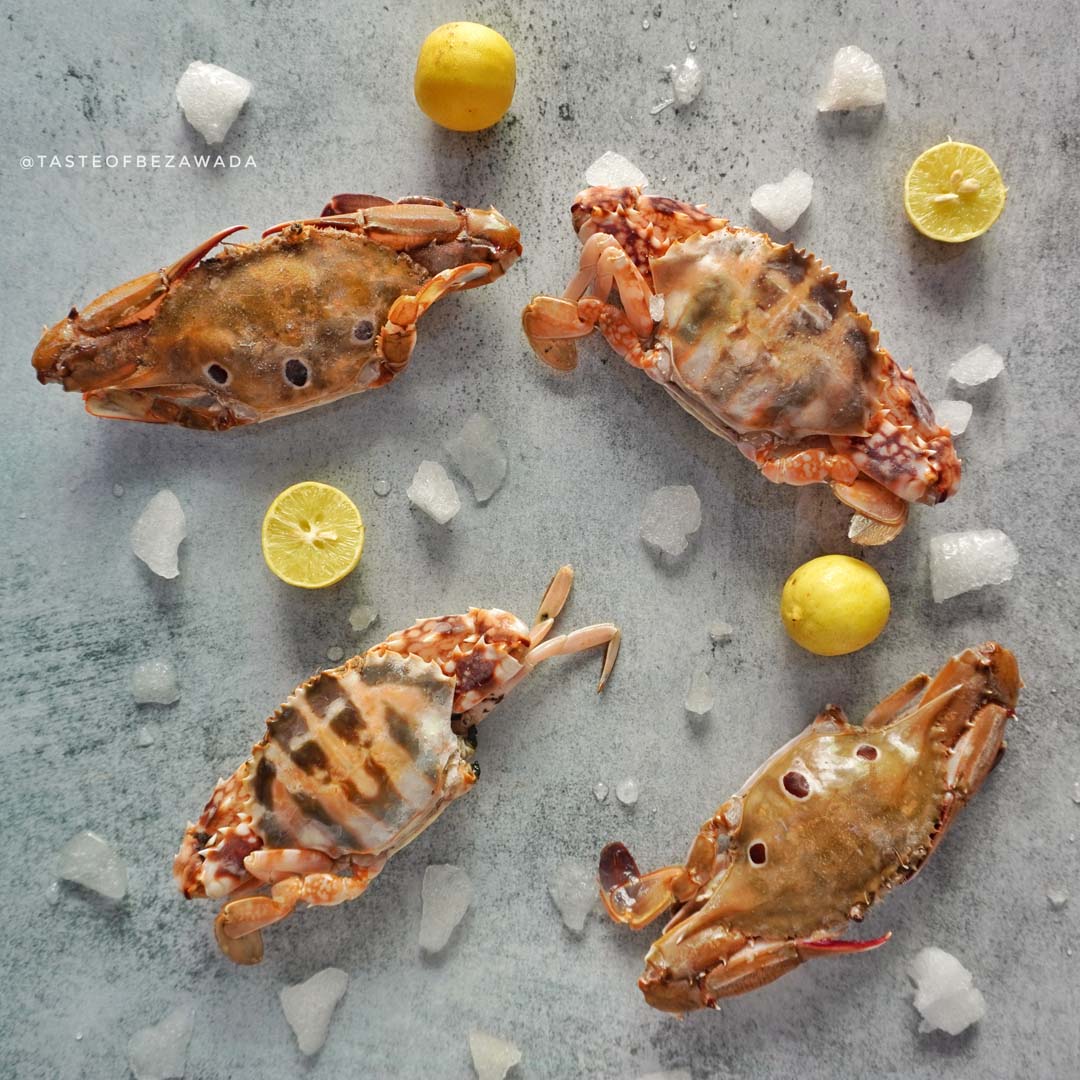
Crabs are decapod crustaceans of the infraorder Brachyura, which typically have a very short projecting "tail" (abdomen) usually hidden entirely under the thorax. They live in all the world's oceans, in fresh water, and on land, are generally covered with a thick exoskeleton, and have a single pair of pincers. Many other animals with similar names – such as hermit crabs, king crabs, porcelain crabs, horseshoe crabs, stone crabs. Crabs make up 20% of all marine crustaceans caught, farmed, and consumed worldwide, amounting to 1.5 million tonnes annually. One species, Portunus trituberculatus, accounts for one-fifth of that total. Other commercially important taxa include Portunus pelagicus, several species in the genus Chionoecetes, the blue crab (Callinectes sapidus), Charybdis spp., Cancer pagurus, the Dungeness crab (Metacarcinus magister), and Scylla serrata, each of which yields more than 20,000 tonnes annually. In some crab species, meat is harvested by manually twisting and pulling off one or both claws and returning the live crab to the water in the belief the crab will survive and regenerate the claws.
SEA CRABS
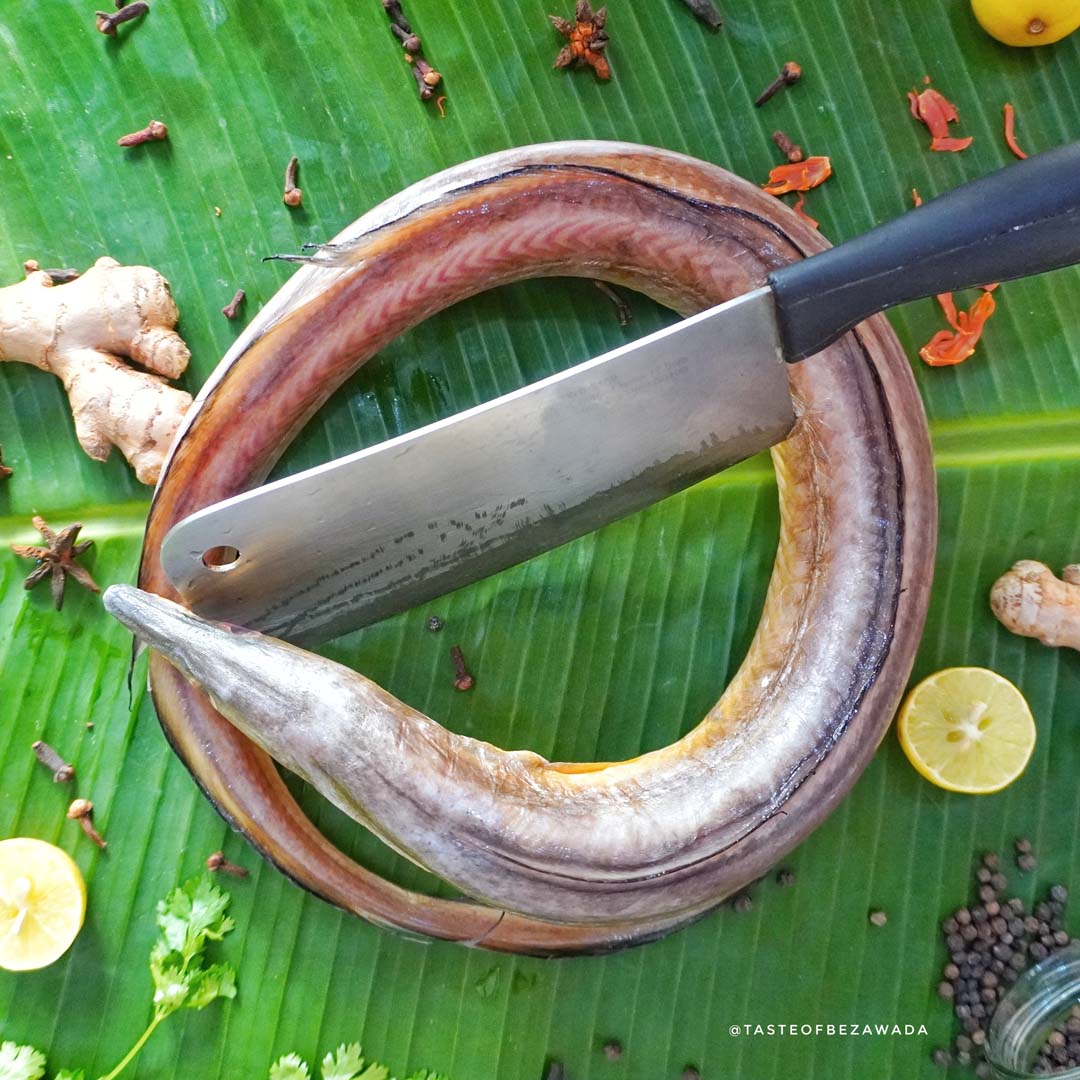
Eels are ray-finned fish belonging to the order Anguilliformes which consists of eight suborders, 19 families, 111 genera, and about 800 species. Eels undergo considerable development from the early larval stage to the eventual adult stage, and most are predators.The term "eel" is also used for some other eel-shaped fish, such as electric eels (genus Electrophorus), spiny eels (family Mastacembelidae), and deep-sea spiny eels (family Notacanthidae). These other clades, however, evolved their eel-like shapes independently from the true eels. Eels live both in salt water and fresh water and some species are catadromous. Eels are elongated fish, ranging in length from 5 cm (2 in) in the one-jawed eel (Monognathus ahlstromi) to 4 m (13 ft) in the slender giant moray. Adults range in weight from 30 g (1 oz) to well over 25 kg (55 lb). They possess no pelvic fins, and many species also lack pectoral fins. The dorsal and anal fins are fused with the caudal fin, forming a single ribbon running along much of the length of the animal. Eels swim by generating waves which travel the length of their bodies. They can swim backwards by reversing the direction of the wave. Most eels live in the shallow waters of the ocean and burrow into sand, mud, or amongst rocks. A majority of eel species are nocturnal, thus are rarely seen. Sometimes, they are seen living together in holes, or "eel pits". Some species of eels also live in deeper water on the continental shelves and over the slopes deep as 4,000 m (13,000 ft)
EEL
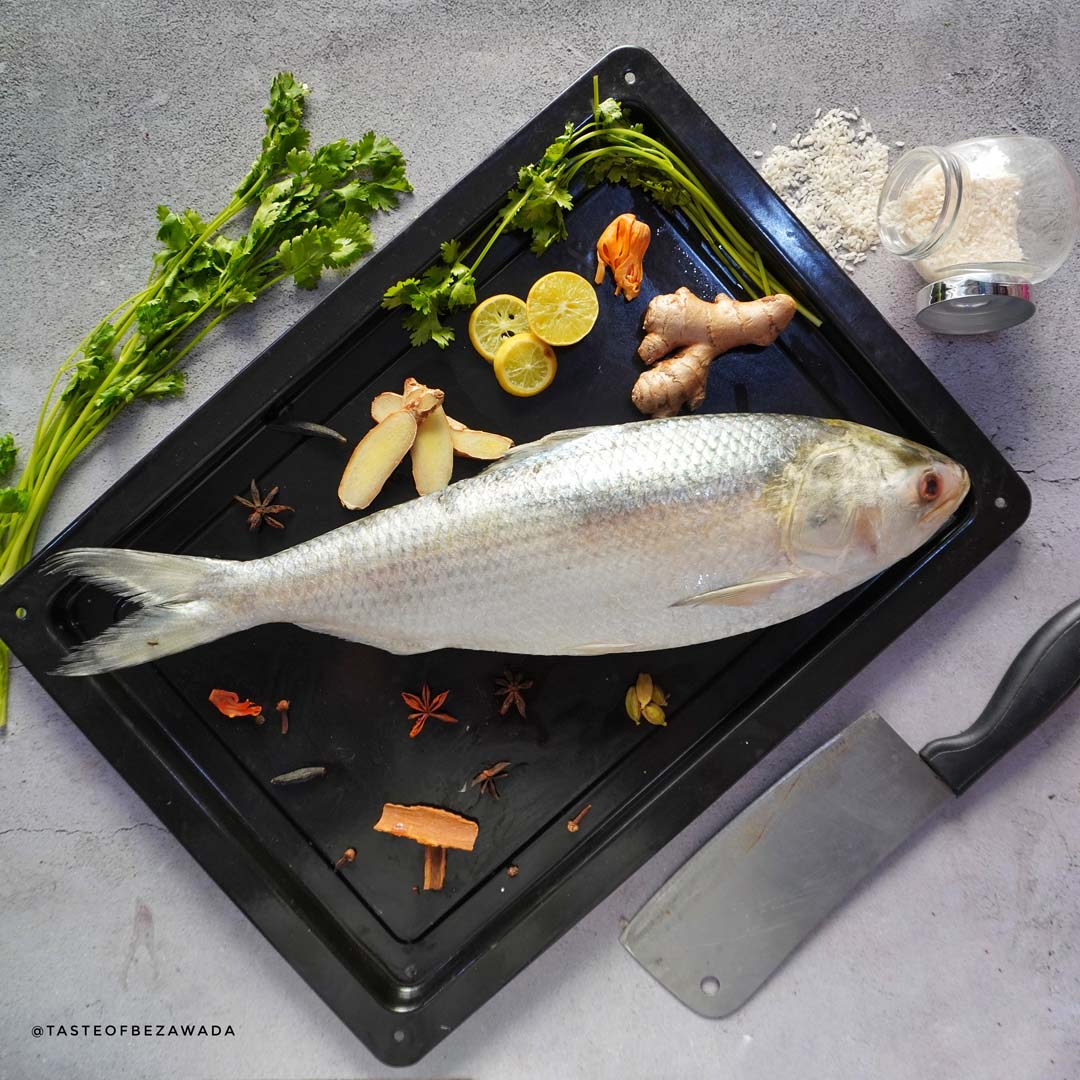
The ilish (Tenualosa ilisha) (Bengali: ইলিশ, romanized: iliš), also known as the ilisha, hilsa, hilsa herring or hilsa shad, is a species of fish related to the herring, in the family Clupeidae. It is a very popular and sought-after food fish in the Indian Subcontinent. The most famous hilsha fish comes from Chandpur District, Bangladesh. It is the national fish of Bangladesh and the state fish of West Bengal. The fish contributes about 12% of the total fish production and about 1.15% of GDP in Bangladesh. On 6 August 2017, Department of Patents, Designs and Trademarks under the Ministry of Industries of Bangladesh has declared the recognition of ilish as the product of Bangladesh. 70-75 percent of total produced ilish in the world is produced in Bangladesh which applied for Geographical Indication (GI) in 2004. About 450,000 people are directly involved in the catching of the fish as a large part of their livelihood; around four to five million people are indirectly involved with the trade. Other names include: jatka, ilish, ellis, palla fish, hilsha, ilih etc. (Assamese: ইলীহ/ইলীহি: ilih/ilihi, Bengali: ইলিশ: ilish, Gujarati: મોદાર/પાલ્વા: Modar or Palva, Odia: ଇଲିଶି ilisi, Sindhī: پلو مڇي pallo machhi, Tamil: உள்ள மீன்/Ulla Meen, Telugu: పులస pulasa). The name ilish is also used in India's Assamese, Bengali and Odia community. In Iraq it is called sboor (صبور). In Malaysia and Indonesia, it is commonly known as terubok. Due to its distinguished features as being oily and tender, some Malays, especially in northern Johore, call it 'terubok umno' (to distinguish it from the toli - which species is rich of tiny bones and not so oily). In Myanmar, it is called ငါးသလောက် in Burmese .
Hilsa
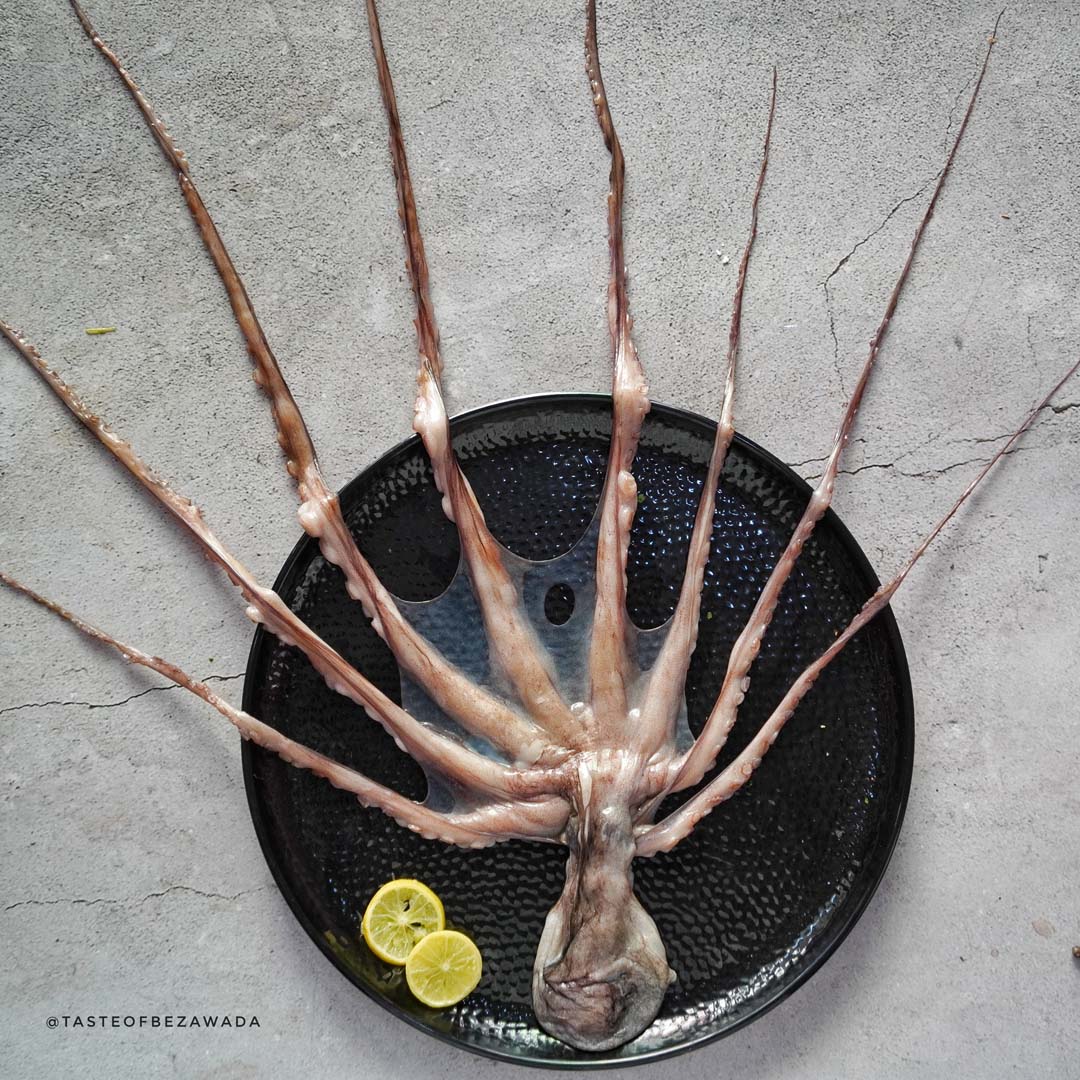
Octopus is a common ingredient in Japanese cuisine, including sushi, takoyaki and akashiyaki. Takoyaki is a ball-shaped snack made of a wheat flour-based batter and cooked in a special takoyaki pan. It is typically filled with minced or diced octopus, tempura scraps (tenkasu), pickled ginger, and green onion. Takoyaki are brushed with takoyaki sauce, similar to Worcestershire sauce, and mayonnaise. The takoyaki is then sprinkled with small strips of laver and shavings of dried bonito. People of some cultures eat octopus. The arms and sometimes other body parts are prepared in various ways, often varying by species and/or geography.Octopuses are sometimes eaten or prepared alive, a practice that is controversial due to scientific evidence that octopuses experience pain.
Octopus
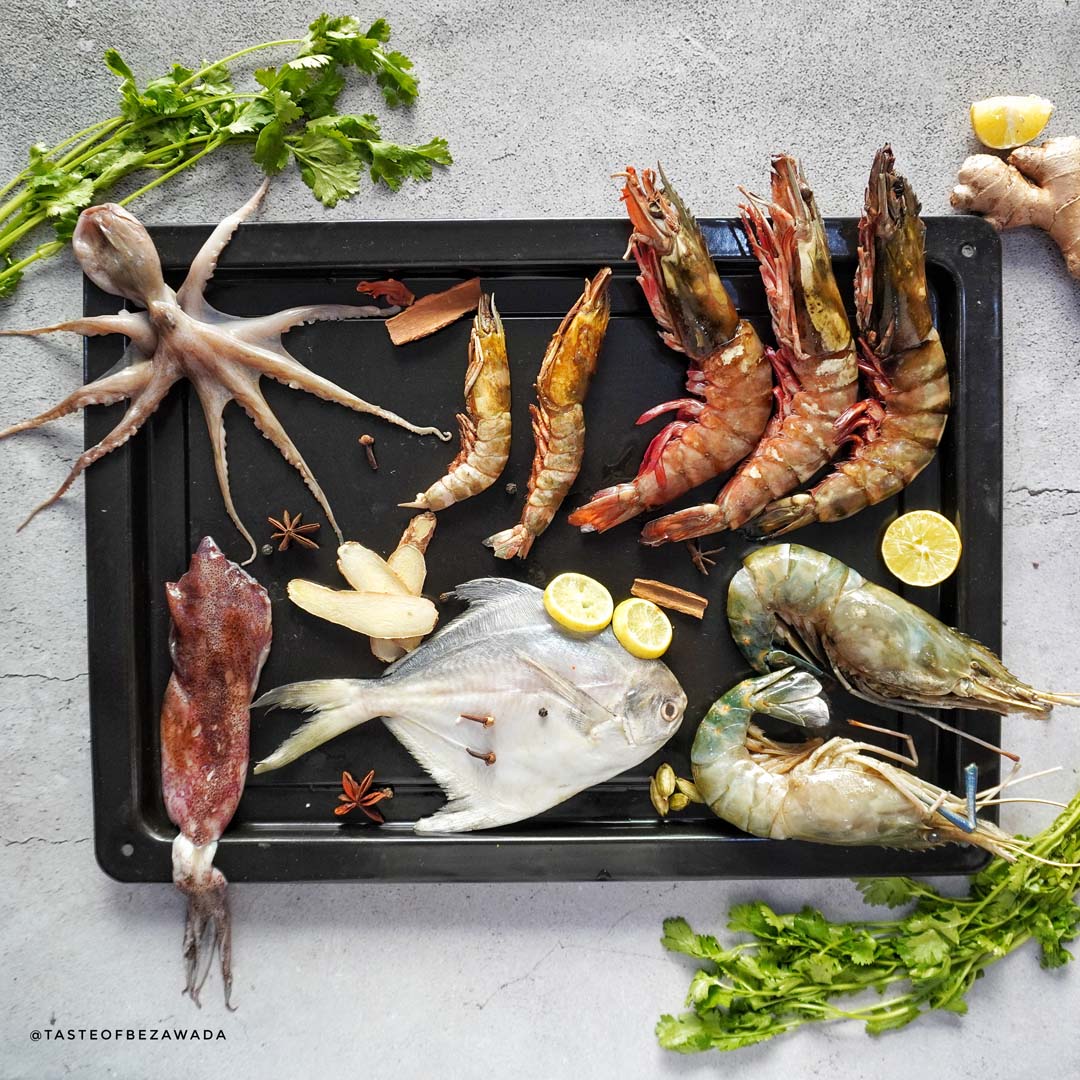
Scampi, also called Dublin Bay Prawn or Norway Lobster (Nephrops norvegicus), is an edible lobster of the order Decapoda.[1] It is widespread in the Mediterranean and northeastern Atlantic, from North Africa to Norway and Iceland, and is a gastronomic delicacy. Scampi is now the only surviving species in the genus Nephrops, after several other species were moved to the closely related genus Metanephrops. Prawn is a common name for small aquatic crustaceans with an exoskeleton and ten legs (which is a member of the order decapoda), some of which can be eaten.The term "prawn" is used particularly in the United Kingdom, Ireland & Commonwealth nations, for large swimming crustaceans or shrimp, especially those with commercial significance in the fishing industry. Shrimp that are present in this category often belong to the suborder Dendrobranchiata. In North America, the term is used less frequently, typically for freshwater shrimp. The terms shrimp and prawn themselves lack scientific standing. Over the years, the way they are used has changed, and these days the terms are almost interchangeable. Squid are cephalopods in the superorder Decapodiformes with elongated bodies, large eyes, eight arms and two tentacles. Like all other cephalopods, squid have a distinct head, bilateral symmetry, and a mantle. They are mainly soft-bodied, like octopuses, but have a small internal skeleton in the form of a rod-like gladius or pen, made of chitin. Squid diverged from other cephalopods during the Jurassic and occupy a similar role to teleost fish as open water predators of similar size and behaviour. They play an important role in the open water food web. The two long tentacles are used to grab prey and the eight arms to hold and control it. The beak then cuts the food into suitable size chunks for swallowing. Squid are rapid swimmers, moving by jet propulsion, and largely locate their prey by sight. They are among the most intelligent of invertebrates, with groups of Humboldt squid having been observed hunting cooperatively. They are preyed on by sharks, other fish, sea birds, seals and cetaceans, particularly sperm whales.
Seafood Platter
(Octopus, Squid, Pomfret, Jumbo Prawns, Tiger Prawns)
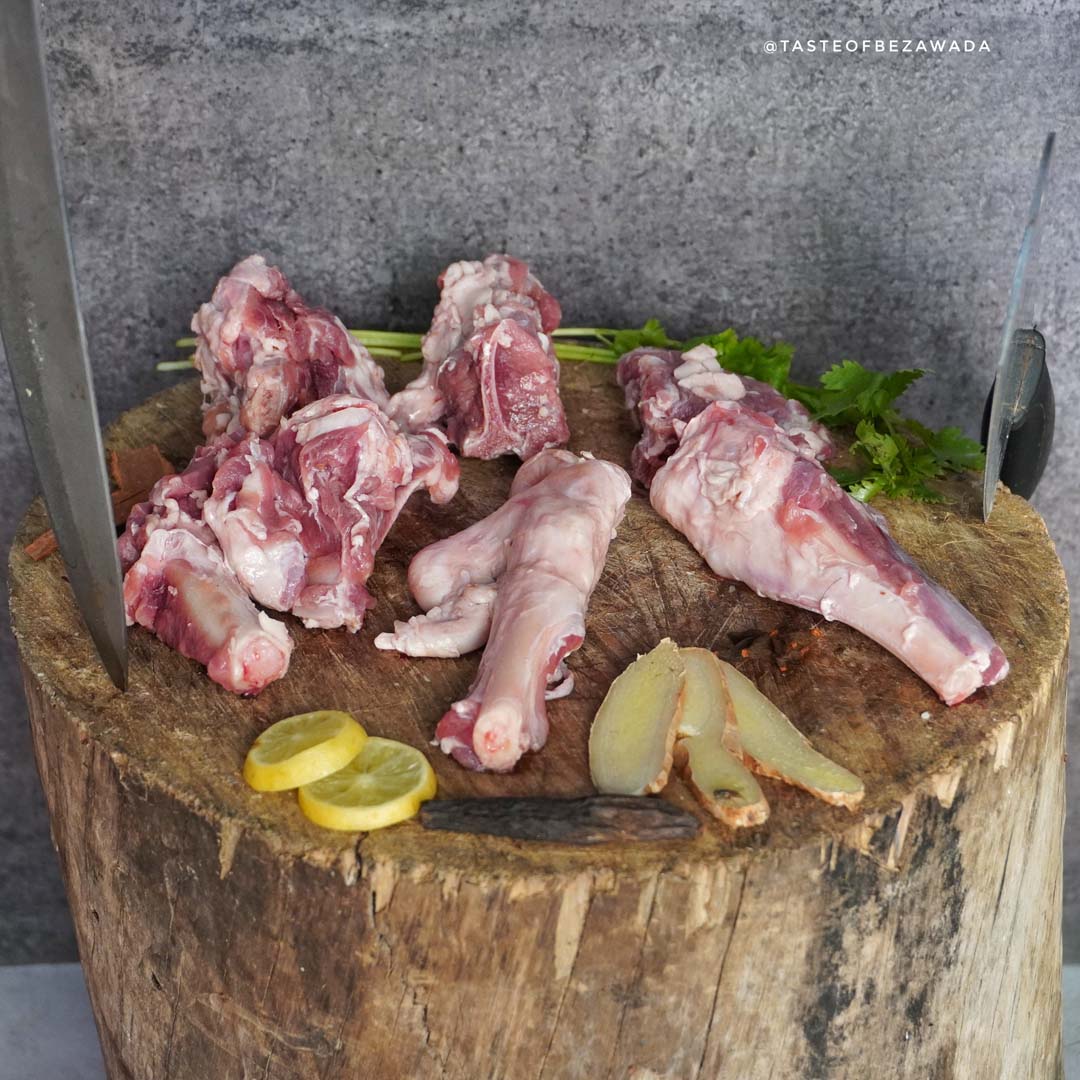
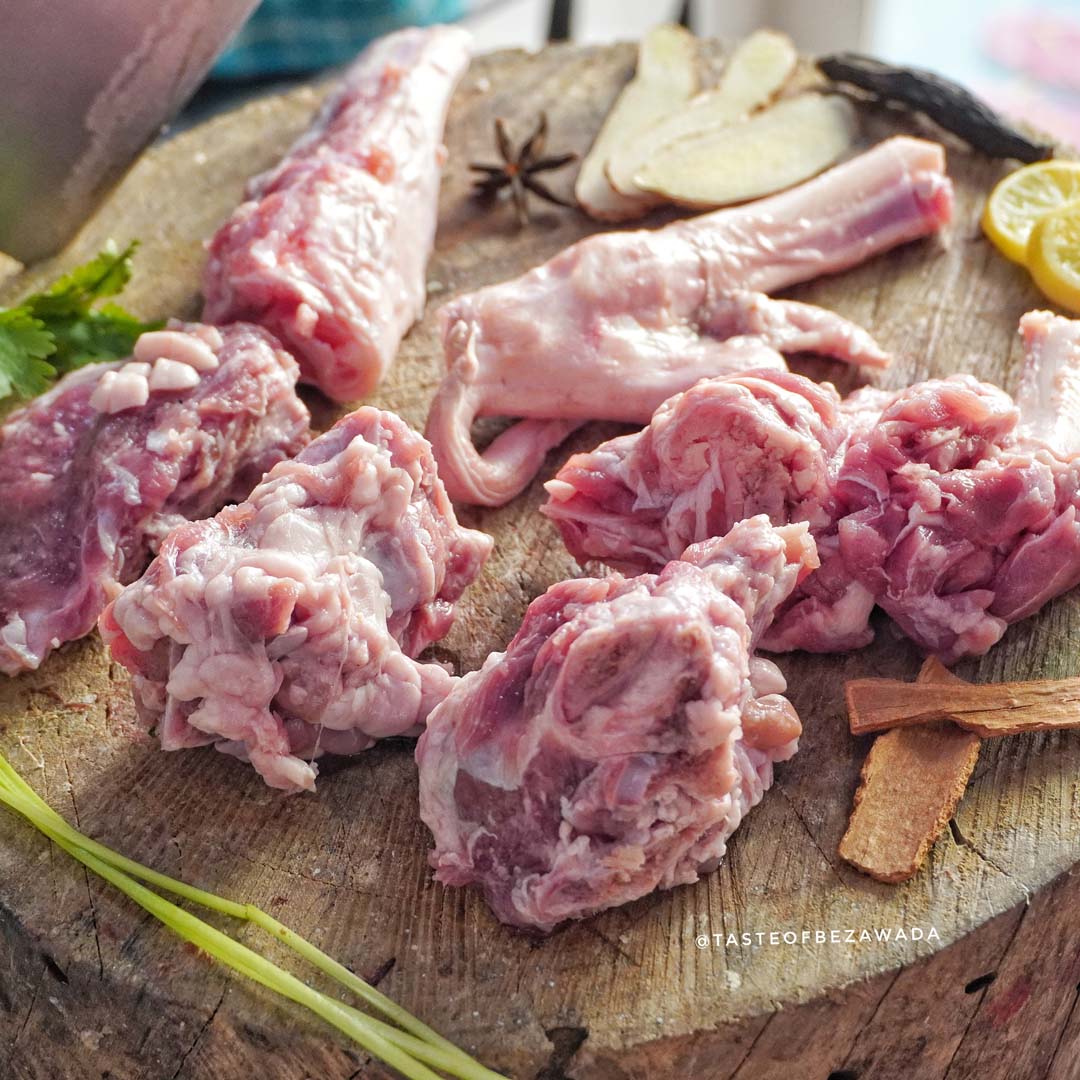
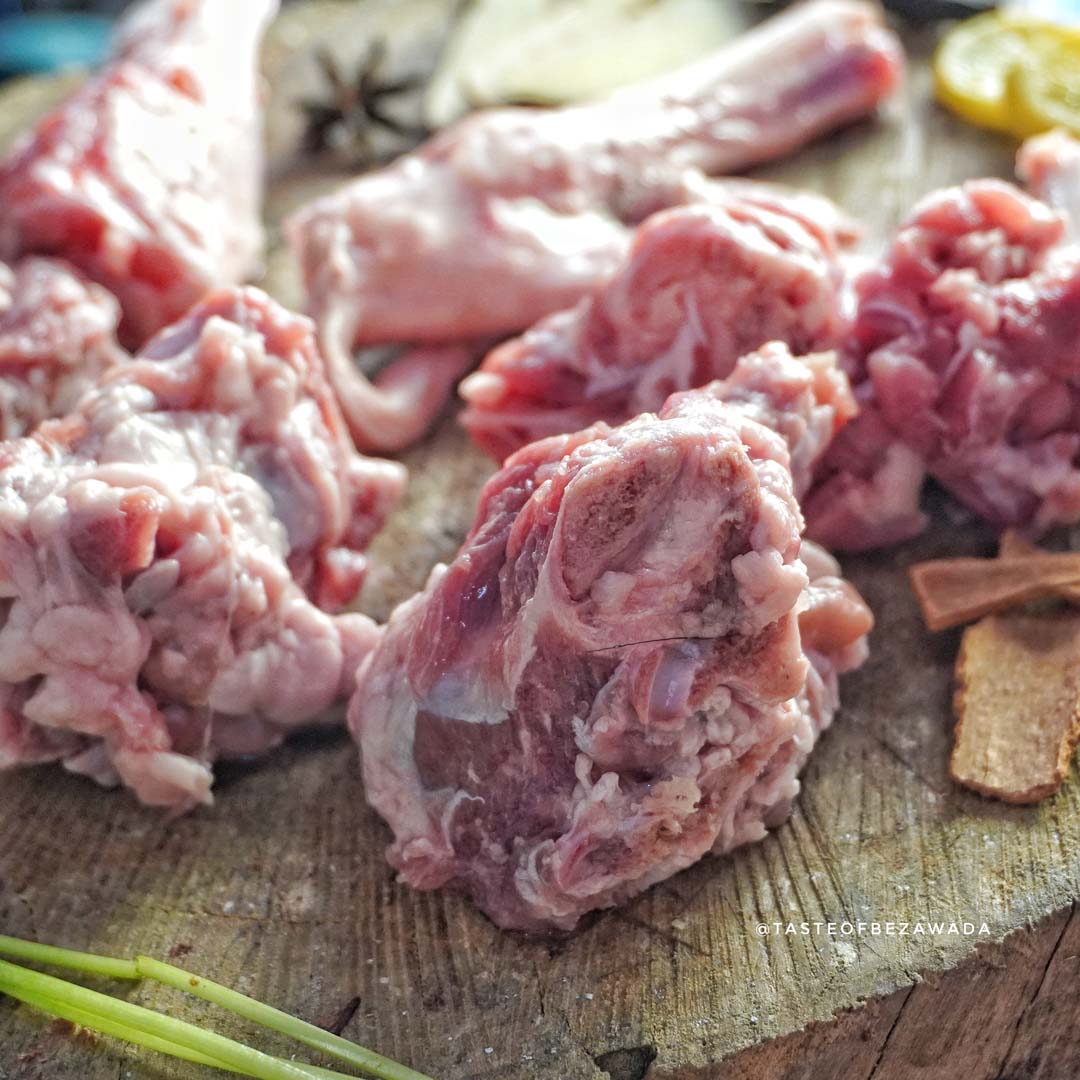
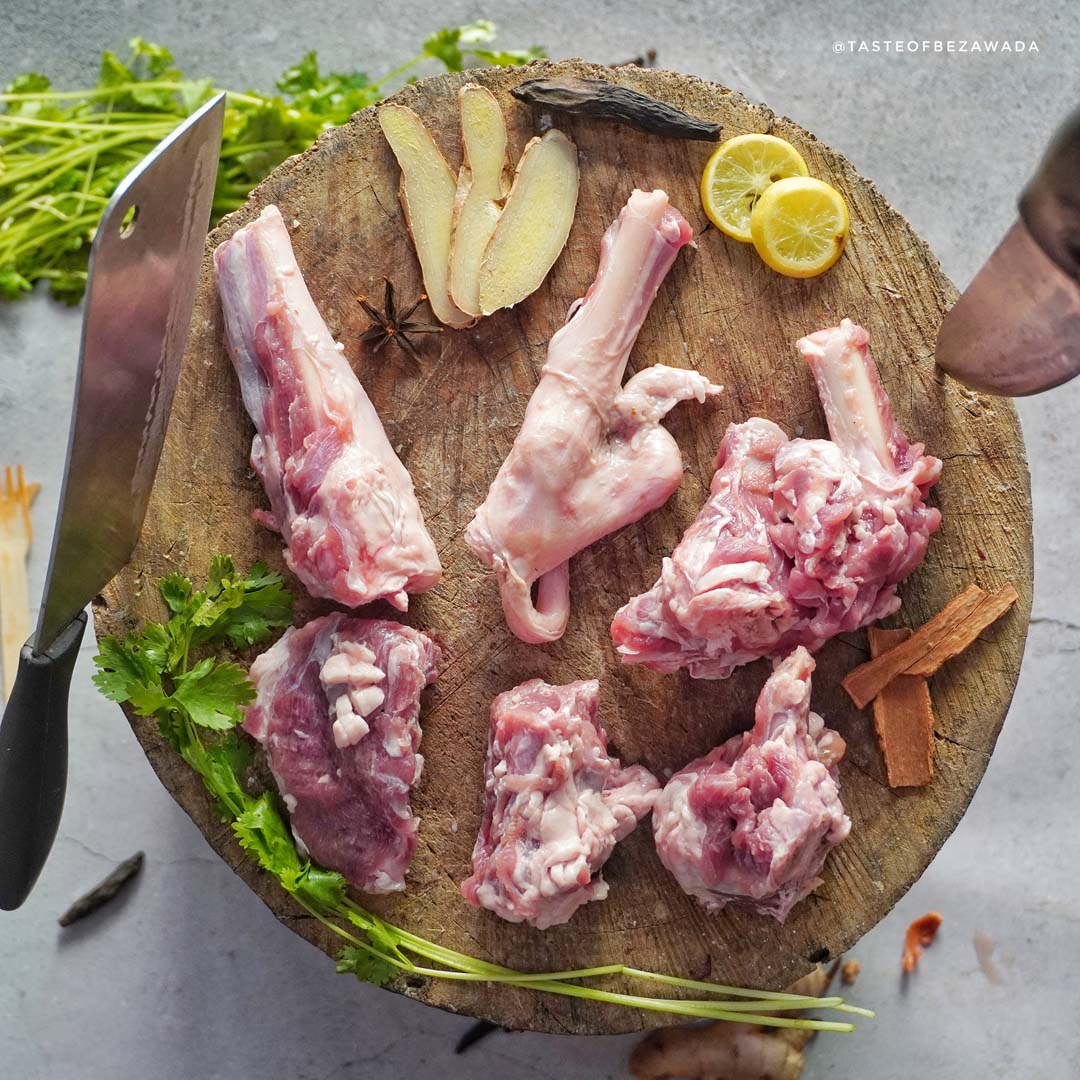
Goat meat or goat's meat is the meat of the domestic goat (Capra aegagrus hircus). The common name for goat meat is simply "goat", though meat from adult goats is referred to as chevon, while that from young goats can be called capretto (It.), cabrito (Sp.) or kid. In South Asian and Caribbean cuisine, mutton commonly means goat meat. In South Asia, where mutton curry is popular, "mutton" is used for both goat and lamb meat. The culinary name "chevon", a blend of chèvre 'goat' and mouton 'sheep', was coined in 1922 and selected by a trade association; it was adopted by the United States Department of Agriculture in 1928. According to market research, consumers in the United States prefer "chevon" to "goat". "Cabrito", a word of Spanish and Portuguese origin, refers specifically to the meat of a young, milk-fed goat. It is also known as chivo.
GOAT MEAT (CHEVON)
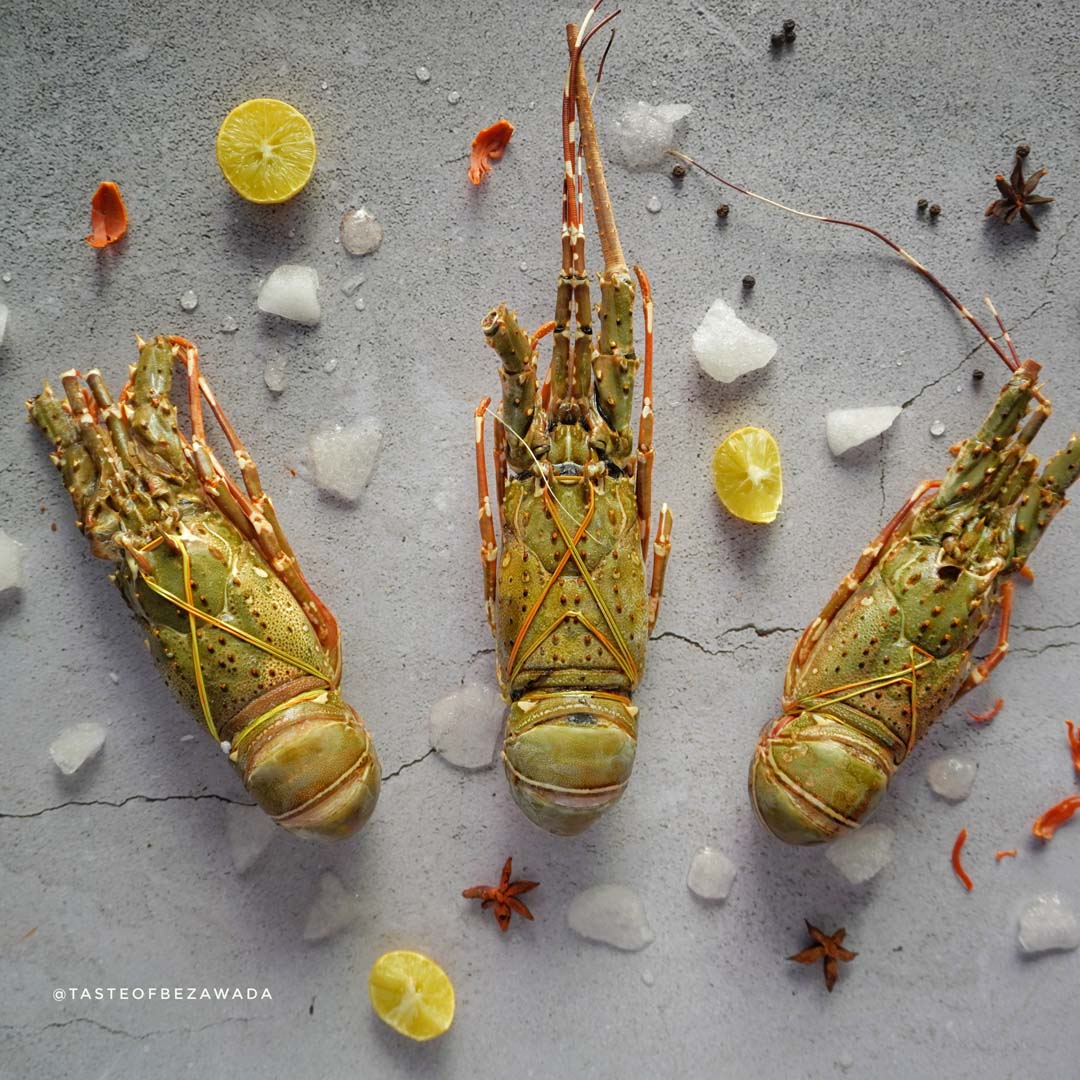
Lobsters are a family (Nephropidae, sometimes also Homeridae) of large marine crustaceans.Lobsters have long bodies with muscular tails, and live in crevices or burrows on the sea floor. Three of their five pairs of legs have claws, including the first pair, which are usually much larger than the others. Highly prized as seafood, lobsters are economically important, and are often one of the most profitable commodities in coastal areas they populate. Typically, lobsters are dark colored, either bluish green or greenish brown as to blend in with the ocean floor, but they can be found in a multitude of colors. Lobsters with atypical coloring are extremely rare, accounting for only a few of the millions caught every year, and due to their rarity, they usually are not eaten, instead being released back into the wild or donated to aquariums. Often, in cases of atypical coloring, there is a genetic factor, such as albinism or hermaphroditism. Notably, the New England Aquarium has a collection of such lobsters, called the Lobster Rainbow, on public display. Special coloring does not appear to have an effect on the lobster's taste once cooked; with the exception of albinos, all lobsters possess astaxanthin, which is responsible for the bright red color lobsters turn after being cooked.
LOBSTER
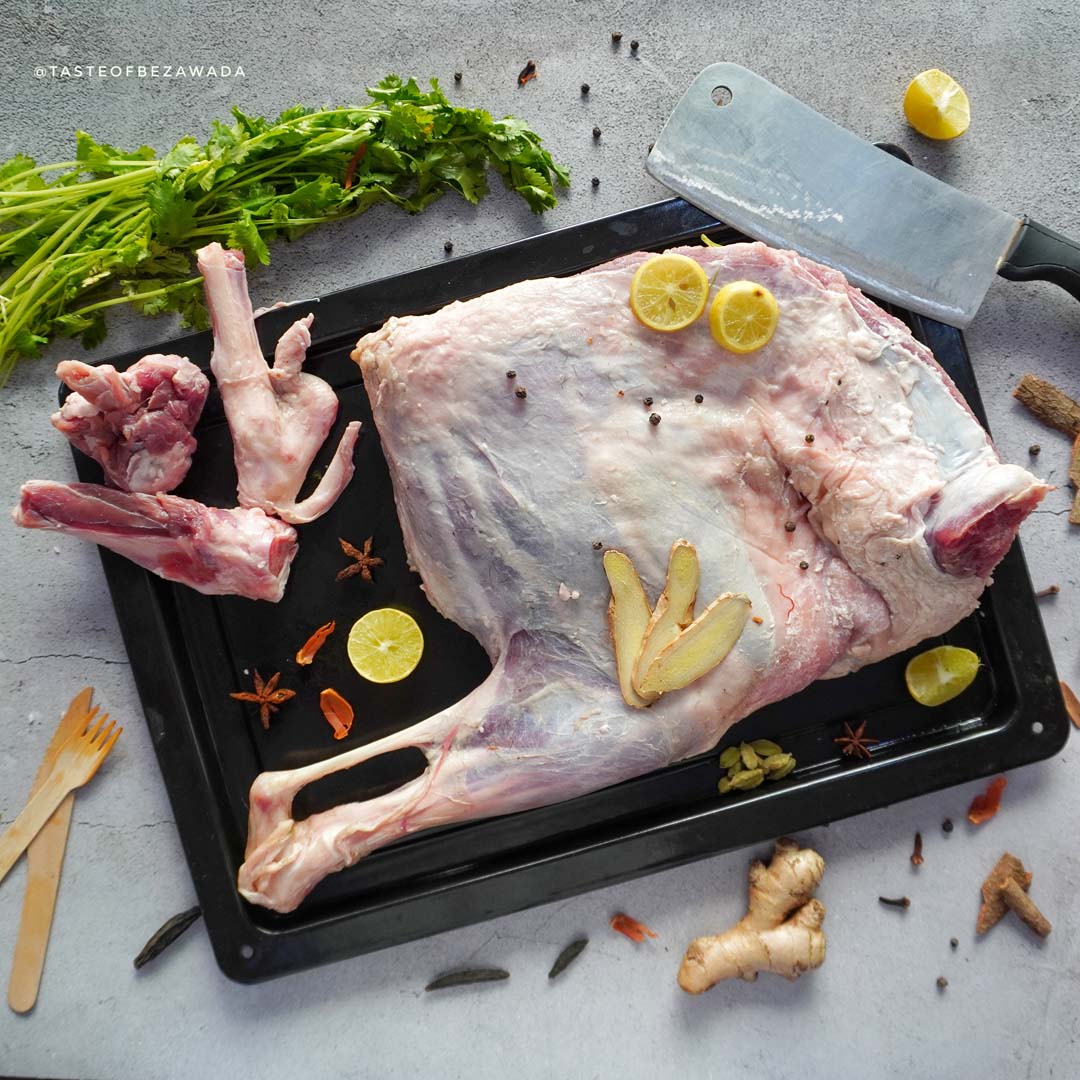
Lamb, hogget, and mutton, generically sheep meat, are the meat of domestic sheep, Ovis aries. A sheep in its first year is a lamb and its meat is also lamb. The meat from sheep in their second year is hogget. Older sheep meat is mutton. Generally, "hogget" and "sheep meat" are not used by consumers outside New Zealand, South Africa and Australia. In South Asian and Caribbean cuisine, "mutton" often means goat meat. At various times and places, "mutton" or "goat mutton" has occasionally been used to mean goat meat. Lamb is the most expensive of the three types and in recent decades sheep meat is increasingly only retailed as "lamb", sometimes stretching the accepted distinctions given above. The stronger-tasting mutton is now hard to find in many areas, despite the efforts of the Mutton Renaissance Campaign in the UK. In Australia, the term prime lamb is often used to refer to lambs raised for meat. Other languages, for example French, Spanish, Italian and Arabic, make similar or even more detailed distinctions among sheep meats by age and sometimes by sex and diet—for example, lechazo in Spanish refers to meat from milk-fed (unweaned) lambs.
LAMB
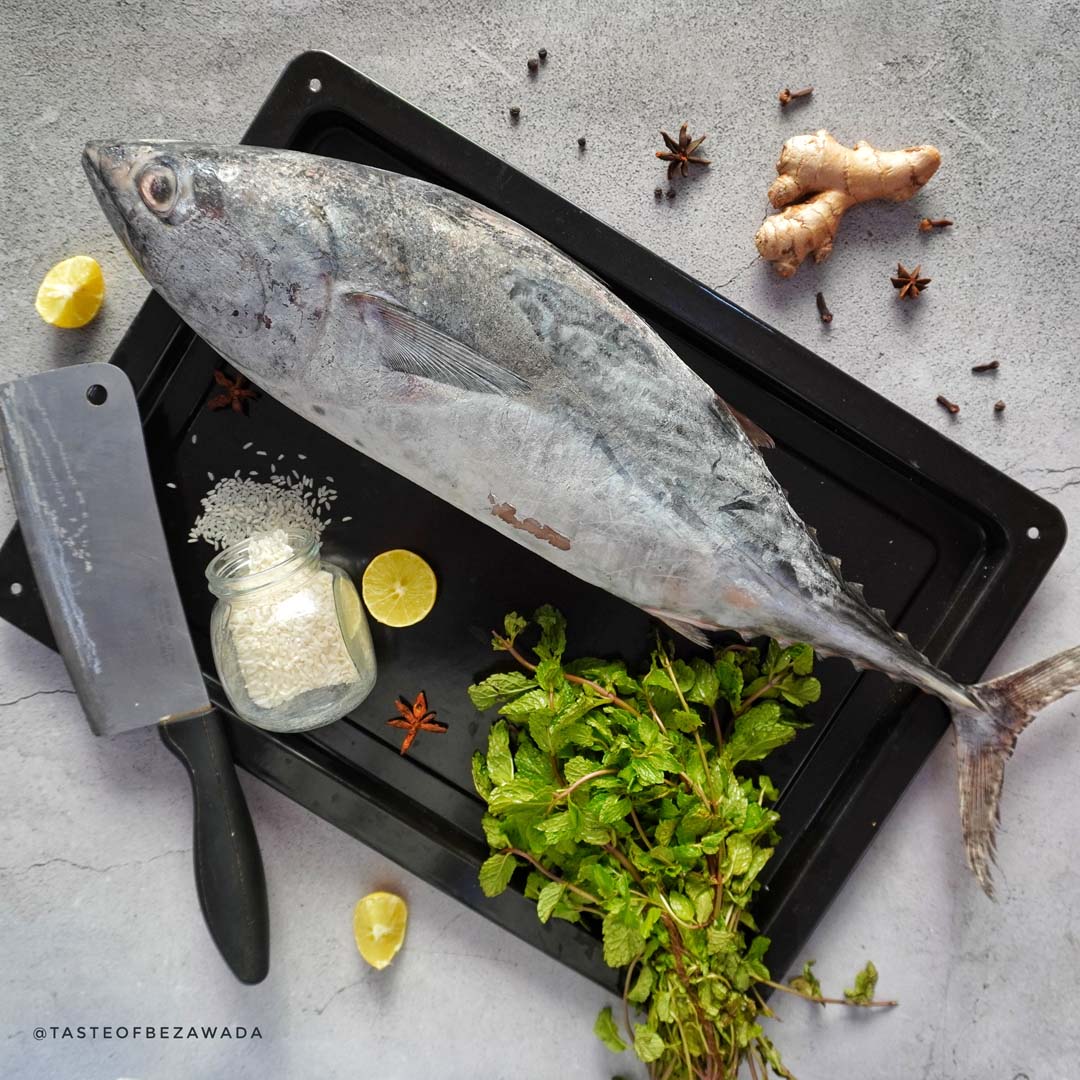
A tuna is a saltwater fish that belongs to the tribe Thunnini, a subgrouping of the Scombridae (mackerel) family. The Thunnini comprise 15 species across five genera, the sizes of which vary greatly, ranging from the bullet tuna (max. length: 50 cm (1.6 ft), weight: 1.8 kg (4 lb)) up to the Atlantic bluefin tuna (max. length: 4.6 m (15 ft), weight: 684 kg (1,508 lb)). The Atlantic bluefin averages 2 m (6.6 ft), and is believed to live up to 50 years. Tuna, opah, and mackerel sharks are the only species of fish that can maintain a body temperature higher than that of the surrounding water. An active and agile predator, the tuna has a sleek, streamlined body, and is among the fastest-swimming pelagic fish – the yellowfin tuna, for example, is capable of speeds of up to 75 km/h (47 mph). Greatly inflated speeds can be found in early scientific reports and still widely reported in the popular literature. Found in warm seas, it is extensively fished commercially, and is popular as a game fish. As a result of overfishing, some tuna species, such as the southern bluefin tuna, are threatened with extinction.
Tuna
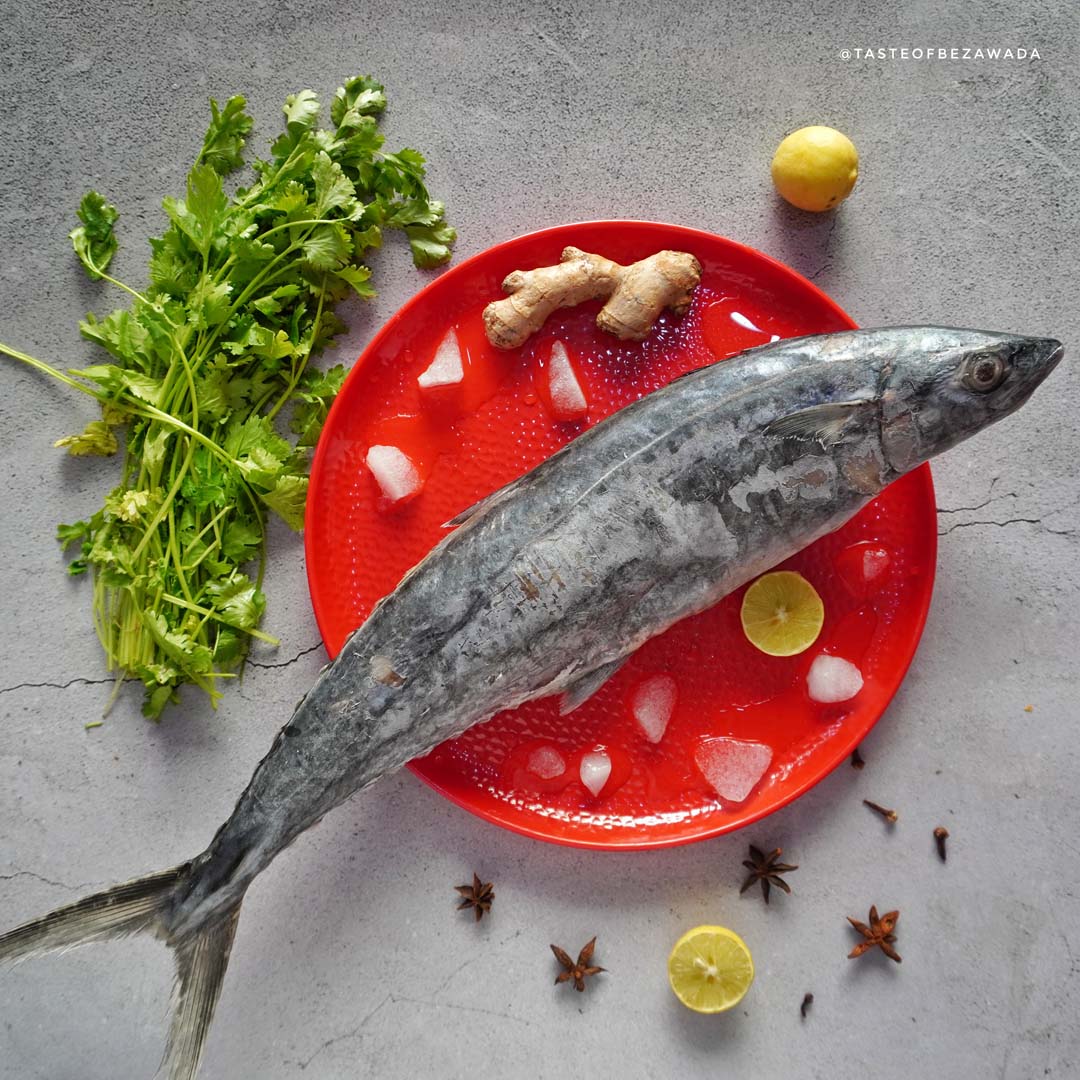
Ndo-Pacific king mackerel or popularly (spotted) seer fish (Scomberomorus guttatus) is a sea fish among the mackerel variety of fishes. It is found in around the Indian Ocean and adjoining seas. It is a popular game fish, growing up to 45 kg (100 lb), and is a strong fighter that has on occasion been seen to leap out of the water when hooked. It is popular among the countries of the Indian subcontinent including Bangladesh, India, Pakistan and Sri Lanka. Seer fish is a delicacy in several regions of India. In Tamil Nadu and Andhra Pradesh, this fish is called "Vanjaram" in Tamil/Telugu as well as "Shermai" among Dakhni people and is usually the costliest variety available. In Maharashtra they are called Surmai,in Goa (in Konkani language ) it is called iswan or viswon. In Malabar (North Kerala) it is called Ayakoora where as in South Kerala it is called Ney-meen. In Karnataka especially in the region of Tulunadu(Dakshina Kannada) they are called Anjal. They can be fried, grilled and made as curry. In addition to being cooked and eaten when fresh, it is also used to make fish pickle, usually eaten as a condiment with rice.
Surmai
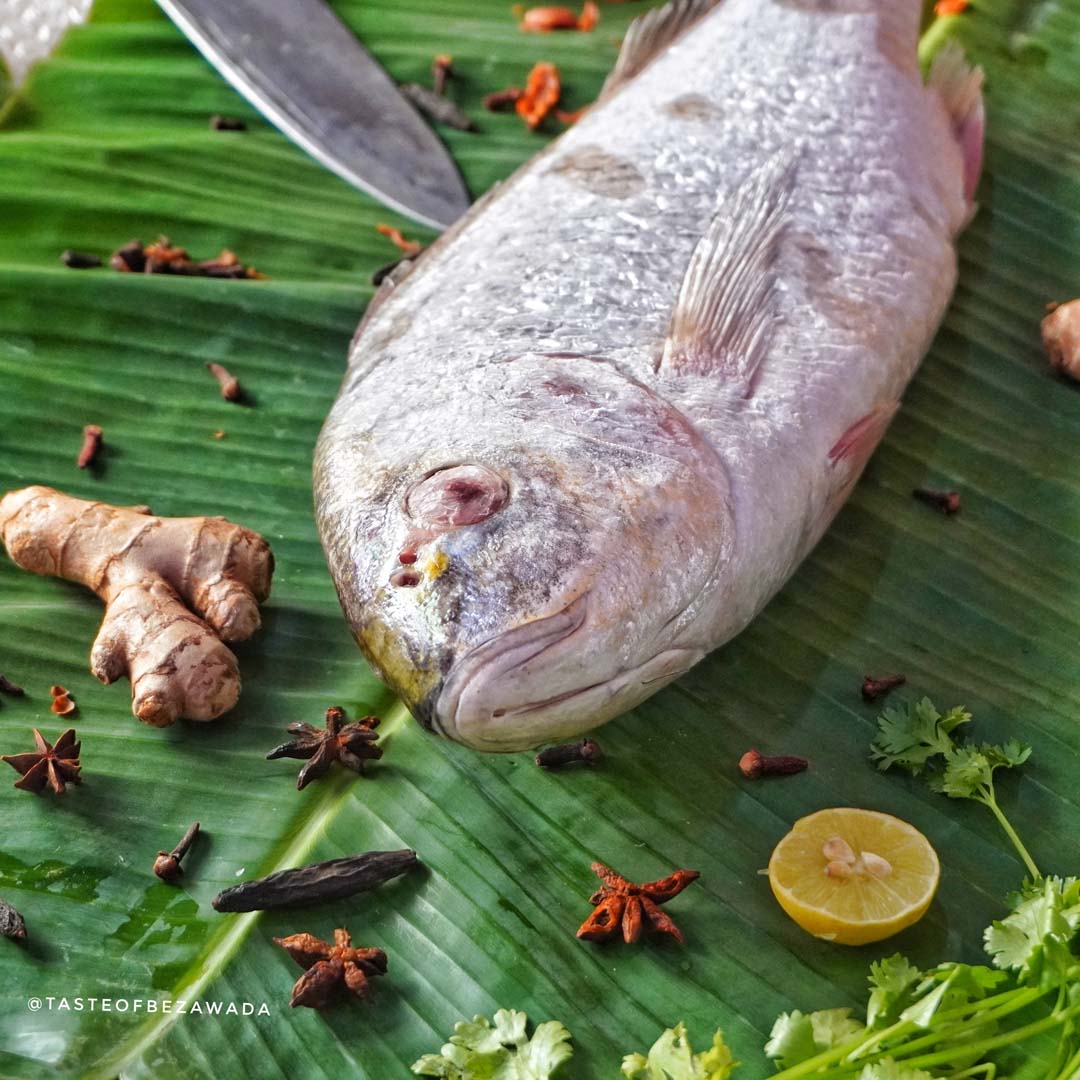
The barramundi (Lates calcarifer) or Asian sea bass, is a species of catadromous fish in the family Latidae of the order Perciformes. The species is widely distributed in the Indo-West Pacific region from South Asia to Papua New Guinea and Northern Australia. This species has an elongated body form with a large, slightly oblique mouth and an upper jaw extending behind the eye. The lower edge of the preoperculum is serrated with a strong spine at its angle; the operculum has a small spine and a serrated flap above the origin of the lateral line. Its scales are ctenoid. In cross section, the fish is compressed and the dorsal head profile clearly concave. The single dorsal and ventral fins have spines and soft rays; the paired pectoral and pelvic fins have soft rays only; and the caudal fin has soft rays and is truncated and rounded. Barramundi are salt and freshwater sportfish, targeted by many. They have large, silver scales, which may become darker or lighter, depending on their environments. Their bodies can reach up to 1.8 m (5.9 ft) long, though evidence of them being caught at this size is scarce. The maximum weight is about 60 kg (130 lb). The average length is about 0.6–1.2 m (2.0–3.9 ft). Its genome size is about 700 Mb, which was sequenced and published in Animal Genetics (2015, in press) by James Cook University.
Bhetki
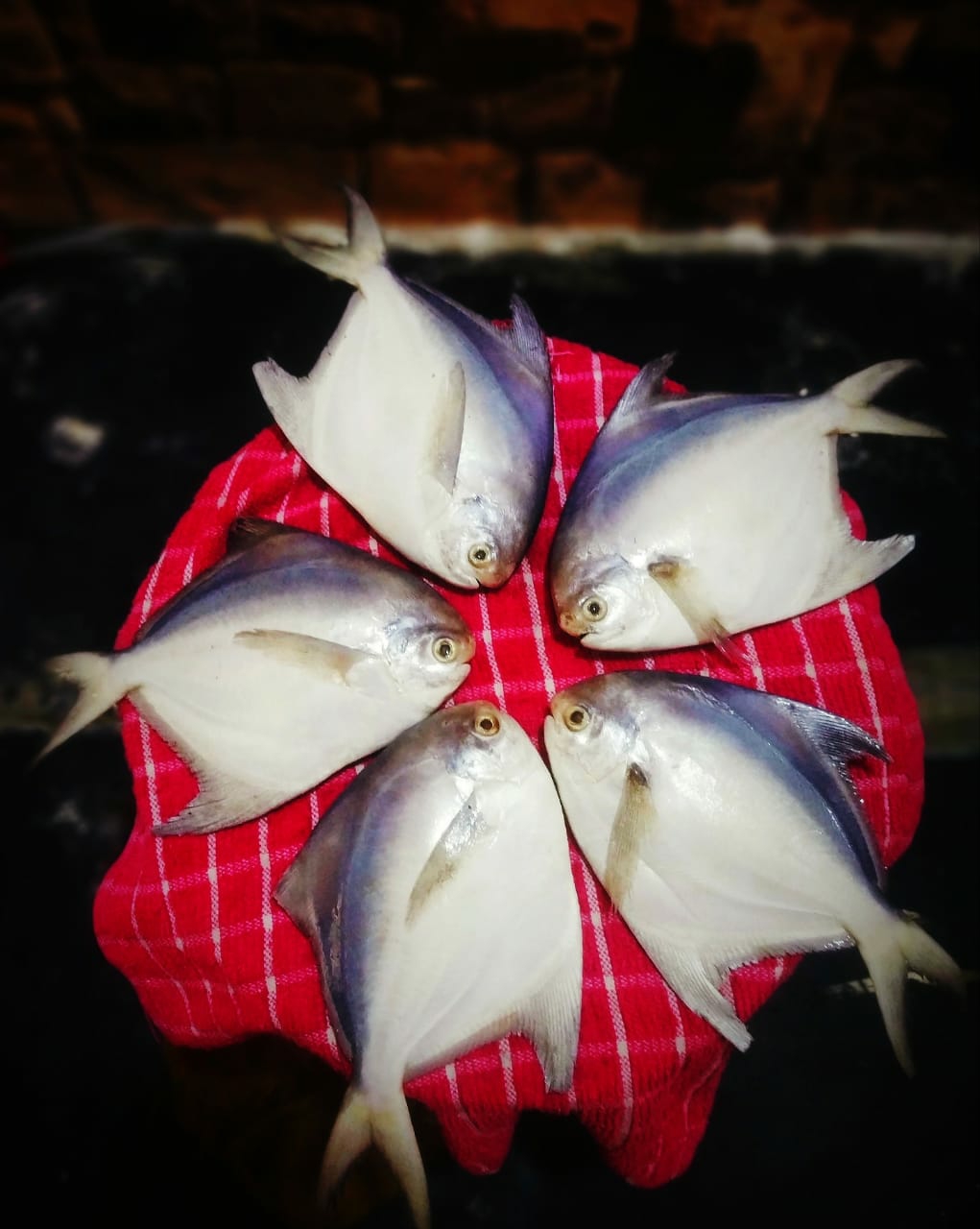
Pomfrets are perciform fishes belonging to the family Bramidae. The family currently includes 20 species across seven genera. Several species are important food sources for humans, especially Brama brama in South Asia. The earlier form of the pomfret's name was "pamflet", a word which probably ultimately comes from Portuguese pampo, referring to various fish such as the blue butterfish (Stromateus fiatola). The fish meat is white in color. They are found globally in the Atlantic, Indian, and Pacific Oceans, as well as numerous seas including the Norwegian, Mediterranean, and Sea of Japan. Nearly all species can be found in the high seas. However, fishes in the genera Pterycombus and Pteraclis tend to be found off continental shelves. Further, fishes in the genus Eumegistus are hypothesized to be largely benthic and found to occupy deep water shelves.Some species of pomfrets are also known as monchong, specifically in Hawaiian cuisine.
Pomfret

